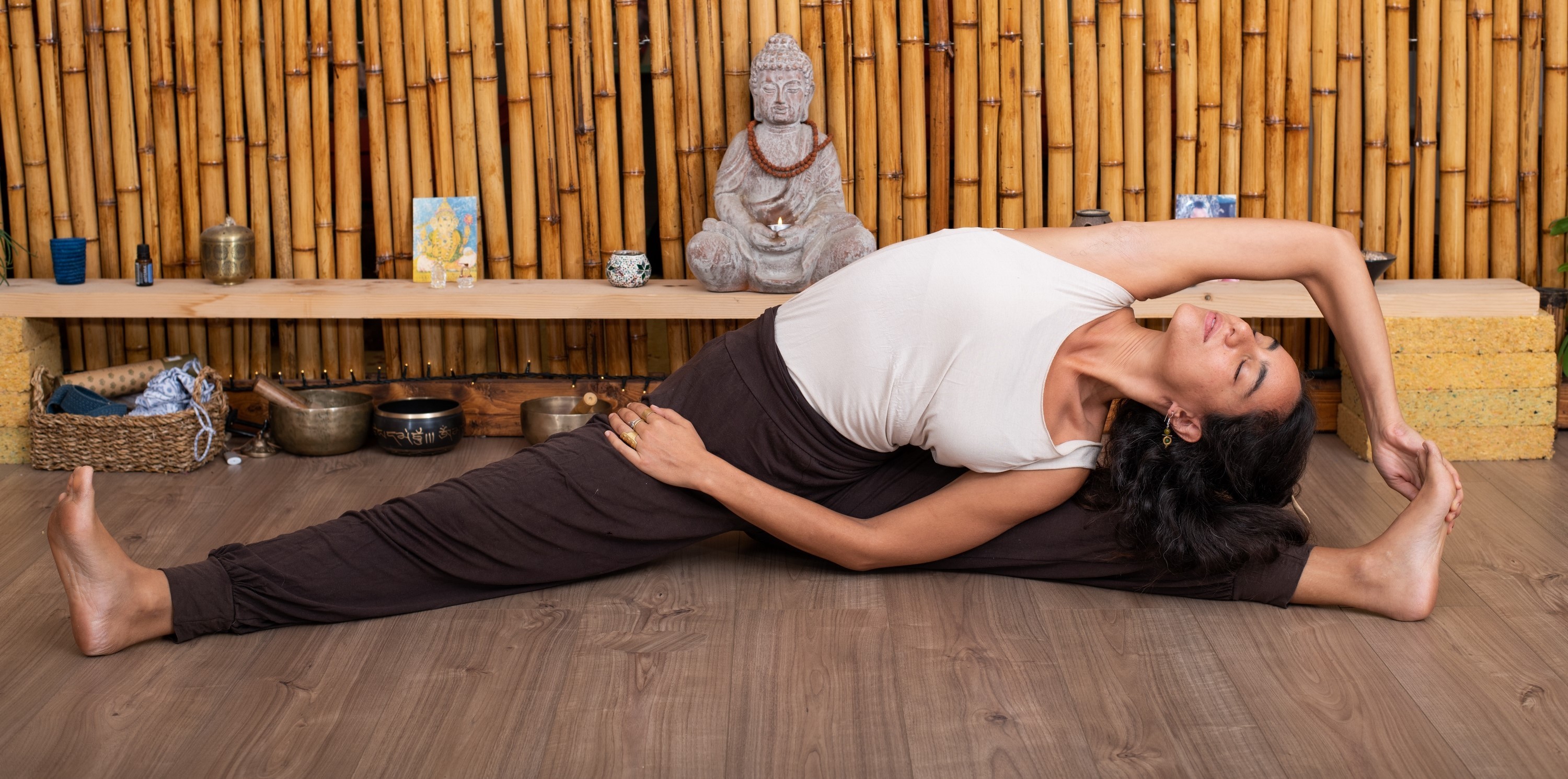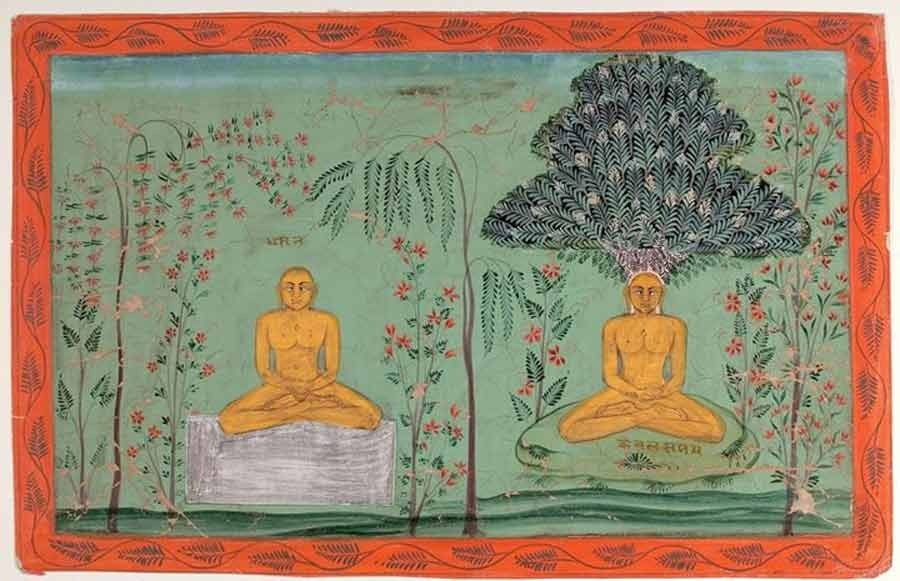HATHA YOGA

Hatha Yoga focuses on physical and energetic balancing
An inner journey that combines dynamic asana (exercise) with an emphasis on observing the self and maintaining calm, along with breathing exercises, meditation, mantra recitation and often yoga nidra (deep relaxation).
The direction is that all of these techniques are not an end, but instead, tools and occasions to get to know and connect with ourselves.

Benefits of Hatha Yoga
- strengthens and tones the muscular system
- improves the flexibility of the body
- strengthens the respiratory function
- h in better perception of the body
- strengthens the functions of the body (digestive, cardiovascular, nervous lymphatic, etc. system)
- reduces stress and trains the body to better manage stress
- improves sleep
- provides energy balancing
- prepares the mind and body for meditation

The origins of Hatha Yoga
The science of Hatha Yoga is based on 4 main texts, all written between the 6th and 15th centuries AD: The Hatha Yoga Pradipika (Swami Swatmarama), the Goraksha Samhita (Gorakhnath), the Gheranda Samhita (Gheranda) and the Hatharatnavali (Srinivasabhatta Mahayogindra). Although the systematic approach to Hatha Yoga began in the 6th century AD, references in ancient texts such as the Upanishads and the Puranas indicate that Hatha Yoga has been practiced for thousands of years.

The scope of Hatha Yoga
According to the yogic tradition 2 energies co-exist in everything and are responsible for all existence.
- One is Prana Shakti (pranic energy, the “Ha” -sun- of Ha-tha), what in other traditions is referred to as Shiva, Purusha or Yang. It flows through the Pingala nadi (the right channel), affects the left hemisphere of the brain and controls the vital functions of the body.
- The second is Chitta Shakti (mental energy, the "tha" - moon - of Ha-tha), also referred as Shakti, Praktiki or Yin. It flows through the Ida nadi (left channel), affects the right hemisphere of the brain and controls the mental processes of the body.
Often, the flow of energy in these two channels alternates and does not flow simultaneously. When one is dominant, the other is blocked. This imbalance is a major source of physical and mental disharmony and more importantly in yoga, it hinders higher levels of spiritual experiences that could come through meditation.
These masters understood that in an organism suffering from this imbalance, the process of meditation or the practice of the yamas and niyamas advocated by other purely meditative systems is very difficult without the necessary preparation. It seems almost impossible to control the mind with the mind.
So they came to the following conclusion: All these different physical, mental and emotional states that we experience are simply different manifestations of Prana. Since it is difficult to control the mind, we begin by disciplining the prana. The idea is that we begin by working with the most accessible tool, the grossest form of energy, the physical body, preparing it to receive and properly channel subtler forms of energy. The purpose of the practice is to purify the body and its elements: as everything is interconnected, one system affects the other and purification occurs in all levels, the nervous system, the digestive system, the nadis, the prana, the tattwas, and the chakras, etc.
Hatha Yoga obviously has great physical and mental benefits, but its early teachers approached it as a method of preparation for meditation and higher states of consciousness.
Prostating first to the Guru, Yogi Swatmarama instructs the knowledge of hatha yoga only for (raja yoga) the highest state of yoga. Hatha Yoga Pradipika 1.2.
With specific tools, the 2 channels are purified and balanced (disciplined to work simultaneously) and the Shushumna nadi (our central channel) is awakened. Also, the psychic centers (chakras) are unblocked, and the kundalini is awakened, rising effortlessly through shushumna to Ajna chakra. This is the ultimate state of Hatha Yoga, whose main purpose is to prepare a fertile ground for the rise of energy in the Sahasrara chakra, which is the state of absolute union, otherwise known as Yoga.
The tools of Hatha Yoga
One of the first tools given is Asana. Fixed postures that directly affect the respiratory, circulatory, musculoskeletal, nervous system etc. They remove toxins initially from the physical body and thus increase the flow of prana, which in turn removes further toxins and blockages, making the body healthier physically, mentally and emotionally.The practice of asana is followed by Pranayama. Pranayama is a method of expanding prana. A way to shed light on all aspects of our existence and consciousness. “To awaken these silent areas we have to charge the brain with a lot of prana and we have to awaken the sushumna nadi.

“To awaken these silent areas we have to charge the brain with a lot of prana and we have to awaken the sushumna nadi. For these purposes we must do pranayama regularly and consistently” (Swami Satyananda)
With the 2 being interrelated, by controlling prana we also control chitta shakti (mental energy), thus disciplining the mind. With techniques like nadi shodhana we purify and balance the nadis. Pranayama is also a powerful method of yogic fire which heats and awakens the kundalini. Combined with the Bandas ('energy locks'), the awakened energy is directed to higher energy centers.
The 4th tool of Hatha Yoga is Mudras, which through specific positions of the body channel the energy produced by asana and pranayama to the various centers affecting our mental state.
But before pranayama (and according to the Gheranda Samhita even before asana), the student must practice the Shatkarmas, the 6 purification techniques of hatha yoga (neti, dhauti, basti, nauli, kapalbhati, trataka). They clean the organs (intestines, stomach, esophagus, sinuses, etc.) and train them to function properly. They remove blockages from the Ida and Pindala nadi and prepare a fertile ground for pranayama.
So while the mind may seem like a battlefield at first, if the above techniques are practiced with sincerity and steadfastness
the evolution of consciousness will take you to the point where the mind is no longer a problem (Sw. Satyananda)
The body cleanses, the mind quiets and we can now benefit from the gifts of meditation and approach ourselves and life full of vitality and enthusiasm.
Τhe class is taught by Anastasia Biliri, Effie Psiachoulia and Panagiota Kostami.